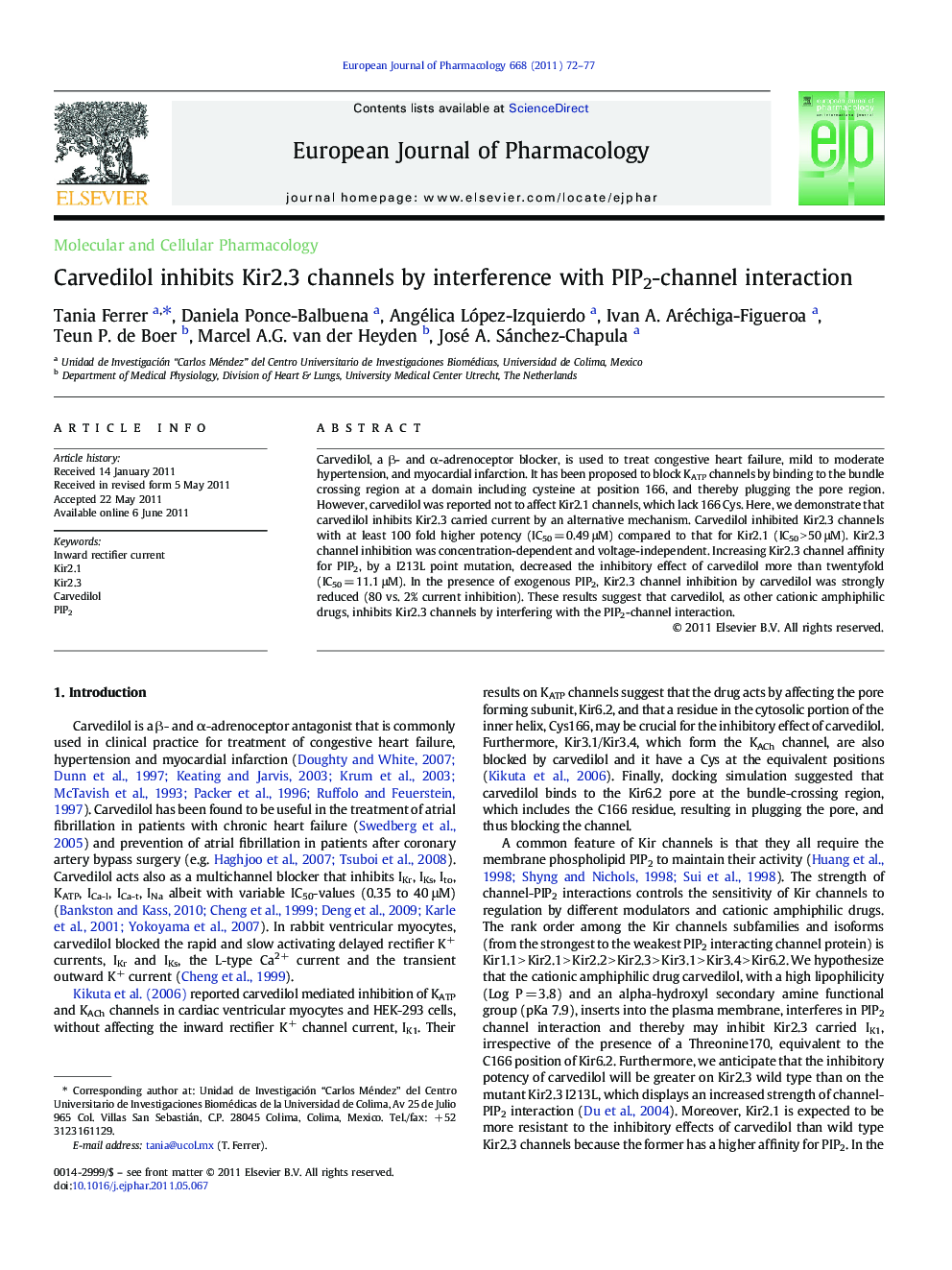| Article ID | Journal | Published Year | Pages | File Type |
|---|---|---|---|---|
| 5830059 | European Journal of Pharmacology | 2011 | 6 Pages |
Abstract
Carvedilol, a β- and α-adrenoceptor blocker, is used to treat congestive heart failure, mild to moderate hypertension, and myocardial infarction. It has been proposed to block KATP channels by binding to the bundle crossing region at a domain including cysteine at position 166, and thereby plugging the pore region. However, carvedilol was reported not to affect Kir2.1 channels, which lack 166 Cys. Here, we demonstrate that carvedilol inhibits Kir2.3 carried current by an alternative mechanism. Carvedilol inhibited Kir2.3 channels with at least 100 fold higher potency (IC50 = 0.49 μM) compared to that for Kir2.1 (IC50 > 50 μM). Kir2.3 channel inhibition was concentration-dependent and voltage-independent. Increasing Kir2.3 channel affinity for PIP2, by a I213L point mutation, decreased the inhibitory effect of carvedilol more than twentyfold (IC50 = 11.1 μM). In the presence of exogenous PIP2, Kir2.3 channel inhibition by carvedilol was strongly reduced (80 vs. 2% current inhibition). These results suggest that carvedilol, as other cationic amphiphilic drugs, inhibits Kir2.3 channels by interfering with the PIP2-channel interaction.
Related Topics
Life Sciences
Neuroscience
Cellular and Molecular Neuroscience
Authors
Tania Ferrer, Daniela Ponce-Balbuena, Angélica López-Izquierdo, Ivan A. Aréchiga-Figueroa, Teun P. de Boer, Marcel A.G. van der Heyden, José A. Sánchez-Chapula,
